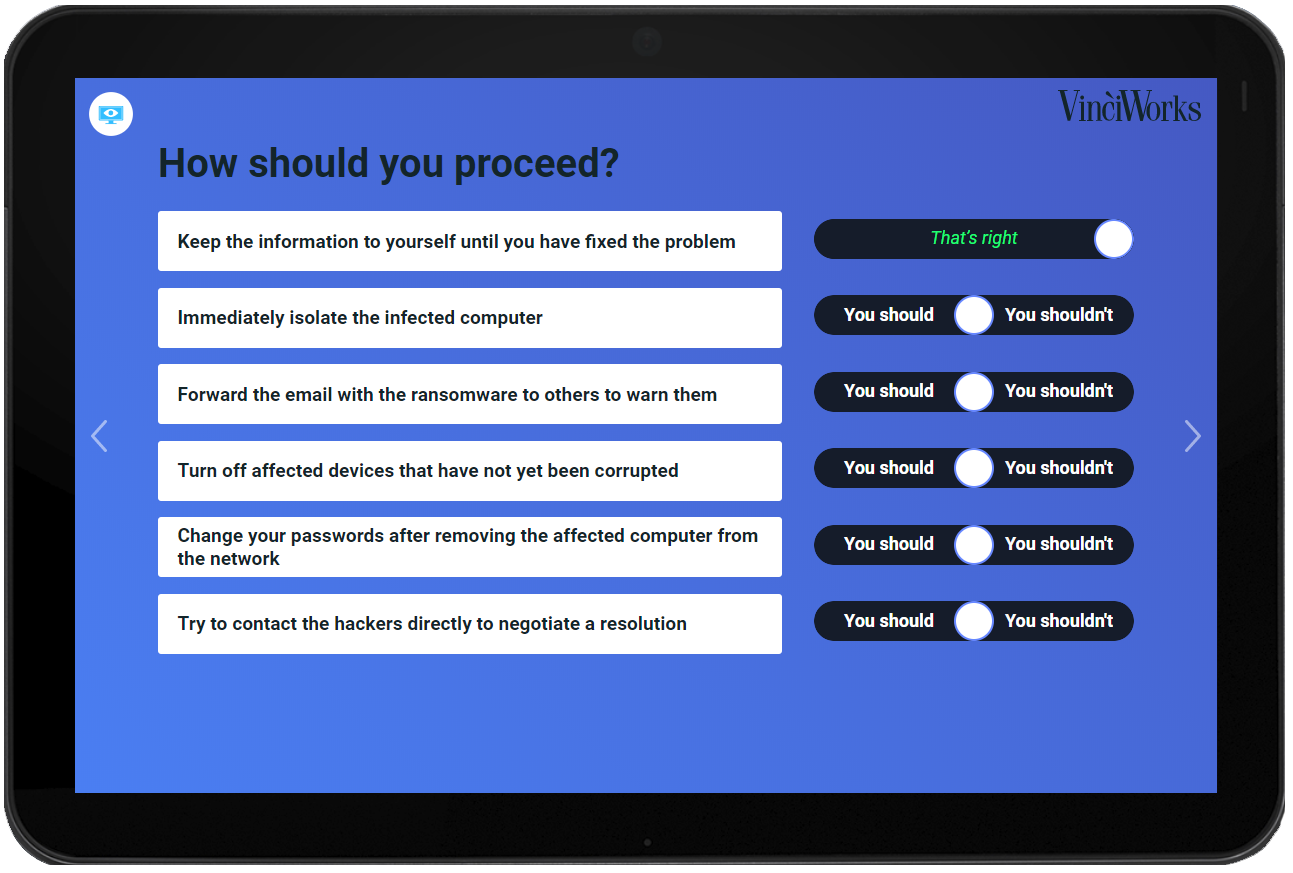GDPR Myth #1: Fine of 4% of global turnover for your first GDPR offence

Will regulators actually fine businesses 4% of global turnover for committing a General Data Protection Regulation offence? What are the actual repercussions of failing to comply with GDPR? It’s a headline-grabbing threat designed to leave you shaking at your keyboard, fearful that one wrong keystroke will siphon off €20m, or 4% of turnover, whichever hurts the most. […]
Updated Cyber Security training suite with two new courses

The number of cyber attacks hit an all-time high last year, with the threat expected to increase in 2018. The highest profile attack, WannaCry, affected over 230,000 organisations worldwide and caused the NHS to cancel appointments and operations. Human error remains the most likely cause of cyber breaches, with phishing emails the no. 1 tactic […]
Countries Worldwide Urged to Make the Workplace Safer
In a speech given in Singapore for the 21st World Congress on Safety and Health at Work, Manpower Minister Lim Swee implored countries around the world to invest more effort in reducing the number of workplace deaths and injuries. Addressing the congress – which included around 3,500 delegates from more than 100 countries – Mr […]
Jail term for VW boss after emission scandal
Since the VW emissions scandal broke in September 2015, observers have been wondering if any of the company’s executives would face jail time for their involvement in the massive fraud. At the end of last year, Oliver Schmidt was sentenced at a court in Detroit to seven years in jail and a $400,000 fine. Oliver […]
Corporate social responsibility policy template

What is your organisation doing to embrace social responsibility? Social responsibility initiatives are not only good for the community, they build brand equity and reputation, and enhance client satisfaction. VinciWorks has created a free corporate social responsibility (CSR) policy template that can be used to clearly communicate CSR initiatives to clients and align employee behaviour. […]
VinciWorks’ online course plan
After a successful 2017 that saw over 170,000 course completions, we are excited to present our tentative plan for our new course releases and updates planned for 2018. Every year, VinciWorks plans its course schedule based on a combination of client feedback and prevalent compliance issues. Updated cyber security training suite with two new courses After […]
Free webinar: GDPR – 10 steps to take before May

On Tuesday 21 February at 12pm, Director of Best Practice Gary Yantin will be joined by Director of Course Development Nick Henderson to explore the challenges facing organisations in preparing for GDPR and give guidance on what still needs to be done. The webinar will cover: Is your organisation ready for the changes? What are […]
How to Fight Modern Slavery in the Supply Chain

Many products currently available on the UK High Street are made by, or contain ingredients produced by, adults and children trapped in slavery. This is a global problem, so far-reaching that The International Labour Organisation (ILO) estimates the number of Modern Slaves is now approaching 25 million (and growing). These adults and children generate billions […]
GDPR: 10 things to do now

The General Data Protection Regulation (GDPR) is now in force. GDPR’s reach is global. Any company that offers goods or services to anyone in the EU will be required to comply. If you haven’t started to comply, or are not sure what to do next, following these steps will help ensure you are ready for […]
Anti-money laundering – how to spot suspicious transactions

Are your staff able to spot suspicious transactions when it comes to money laundering? Suspicious transactions in money laundering A suspicious transaction is any transaction or business dealing which raisis in the mind of a person involved any concerns or indicators that there may be something illegal or something related to money launering or terrorist […]






